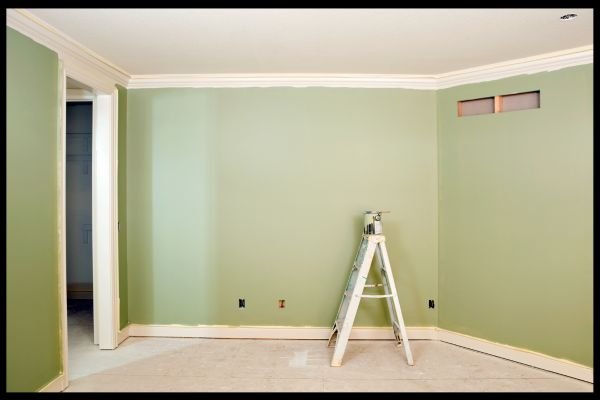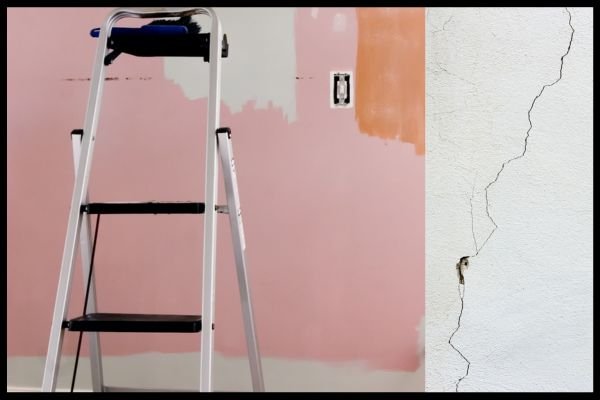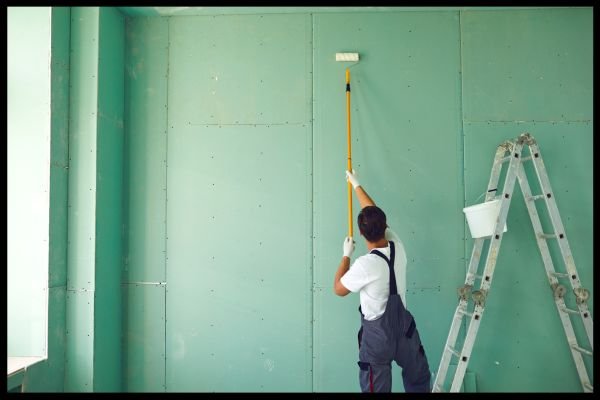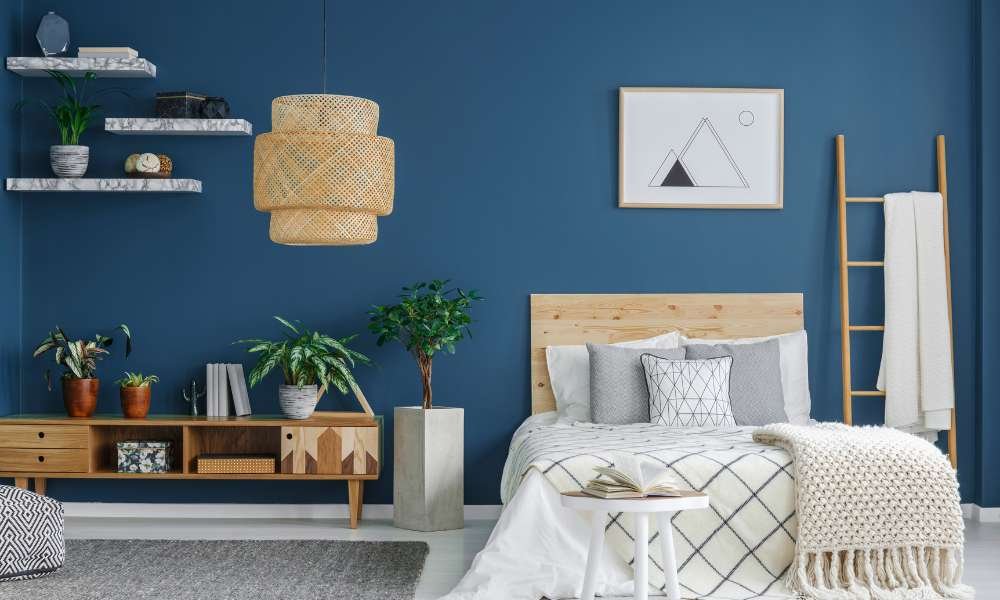Painting a bedroom can give it a fresh look and revitalize the space. However, the cost involved can vary significantly depending on several factors. Let’s delve into the intricacies of estimating the cost of painting a bedroom. Learn How much does it cost to paint a bedroom and get expert tips for budgeting your project effectively. Plan your makeover with confidence.
1. Size of the Bedroom:

The size of the bedroom is one of the primary factors influencing the cost of painting. Larger bedrooms require more paint and labor, resulting in higher expenses compared to smaller ones. Additionally, the height of the walls can also impact the amount of paint needed and, consequently, the overall cost.
2. Type of Paint:

The type of paint chosen for a painting project has a significant impact on the overall cost. It’s essential to consider the initial investment and long-term expenses associated with different paint options.
I. High-Quality Paints:
High-quality paints may have a higher upfront cost, but they offer several advantages. These paints typically provide better coverage and durability compared to their lower-quality counterparts. Investing in high-quality paint can potentially reduce the need for frequent repainting, ultimately saving homeowners money in the long term.
II. Low-Quality Paints:
While lower-quality paints may seem more budget-friendly initially, they often come with drawbacks. These paints may require more frequent touch-ups or complete repainting due to their inferior coverage and durability. As a result, homeowners may end up spending more money over time on maintenance and repainting costs.
III. Consideration
When selecting paint for a project, homeowners should carefully consider the trade-offs between upfront costs and long-term benefits. While high-quality paints may have a higher initial price tag, their durability and longevity can lead to cost savings in the future. It’s important to weigh these factors and choose the paint that best aligns with both short-term budgetary constraints and long-term maintenance goals.
3. Prep Work Needed:

The condition of the walls and any necessary prep work can impact the cost of paint. See below the explanation of this;
I. Filling Cracks and Holes:
Spackling or joint compound, available in paste or powder forms, is commonly utilized to fill cracks and holes in walls, ensuring a smooth surface. Applying these materials necessitates the use of a putty knife or a trowel, facilitating precise application and ensuring a seamless finish.
II. Sanding Rough Surfaces:
To smooth out rough surfaces before painting, sandpaper of varying grits is employed based on the severity of imperfections and surface type. Sanding blocks or sanding sponges are favored tools for this task, providing a level and uniform surface conducive to achieving a smooth finish.
III. Applying Primer:
Primer plays a pivotal role in wall preparation, ensuring uniformity and enhancing paint adhesion. Available in latex-based or oil-based formulations, primer selection depends on the type of paint used. The application involves utilizing a paint roller for covering large areas efficiently and a brush for precise detailing around edges and corners.
IV. Labor:
Proficient painters or skilled DIYers proficient in filling cracks, sanding surfaces, and applying primer are essential for effective prep work. The time required for prep work varies depending on the extent of repairs needed, emphasizing the importance of allocating adequate time for meticulous completion before commencing painting. Consideration of the materials, tools, and labor required for each aspect of prep work enables homeowners to accurately estimate costs and ensure the availability of necessary resources for a successful painting project.
4. Complexity of the Job:

The complexity of the painting job can also influence the cost. Bedrooms with intricate architectural details, such as crown molding, chair rails, or wainscoting, may require more time and effort to paint, resulting in higher costs. Similarly, ceilings with unusual angles or heights can also affect pricing due to the additional labor involved.
5. Labor Costs:

Labor costs are a significant component of the overall cost of painting a bedroom. The rates charged by professional painters vary depending on factors such as location, experience, and the complexity of the job. While hiring experienced painters may entail higher expenses, it ensures quality workmanship and timely completion of the project.
6. Additional Services:

Additional services such as priming, wallpaper removal, or trim painting can add to the total expenses of painting a bedroom. Homeowners should discuss their specific requirements with the painting contractor to obtain detailed estimates for these additional services and factor them into the overall budget.
7. Cost Estimation:

Determining the cost of painting a standard-sized bedroom encompasses several elements, and the actual expenses can vary considerably. While estimates typically range from $300 to $1200, it’s important to understand that this figure is a general approximation. To obtain a more precise estimate aligned with individual project needs, homeowners are encouraged to gather multiple quotations from painters. When budgeting for bedroom painting, it’s crucial to account for all related expenditures, including materials, labor, and any unexpected costs. Therefore, it’s advisable to establish a realistic budget for the task.
8. DIY vs. Hiring Professionals:

While DIY painting may seem cost-effective initially, it requires time, effort, and expertise. Furthermore, poorly executed paint jobs may result in additional expenses for repairs or repainting in the future. Hiring professional painters not only ensures a hassle-free experience but also guarantees high-quality results that can enhance the overall appearance of the bedroom.
9. Cost-Saving Tips:

Opt for mid-grade paint instead of premium brands to save on costs without compromising quality. Bundle multiple painting projects within the home to negotiate a better rate with the painting contractor. Consider repainting only the walls and trim instead of the ceiling to reduce expenses. DIY tasks such as moving furniture or removing wall décor can help minimize labor costs and, consequently, overall expenses.
Conclusion:

Painting a bedroom is an investment that can enhance the aesthetic appeal and value of the space. By understanding the various factors influencing expenses and exploring cost-saving options, homeowners can effectively budget for their painting project and achieve the desired results without breaking the bank.
In summary, the cost to paint a bedroom varies based on factors such as size, type of paint, prep work, labor, and additional services. By carefully considering these factors and obtaining detailed estimates, homeowners can achieve a beautifully painted bedroom within their budget while ensuring long-lasting results.



